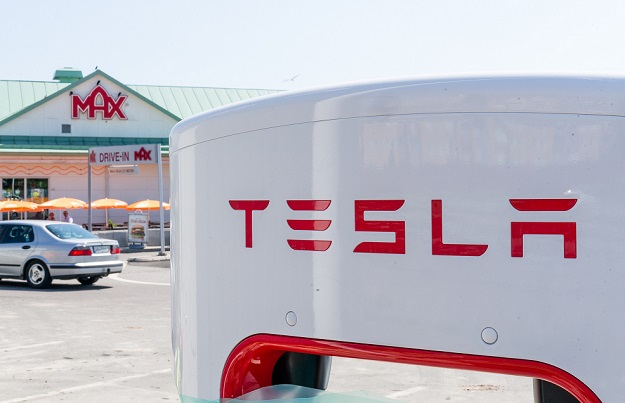Free access to Tesla’s increasingly expansive network of Superchargers has long been an important and ancillary perk to owning a Tesla. In addition to providing Tesla owners with free juice for long road-trips, Tesla Superchargers also helped alleviate longstanding concerns about ‘range anxiety’.
As Tesla has grown more popular over the years, the number of Tesla vehicles on the road has absolutely exploded. Looking ahead, the number of Teslas in use will likely skyrocket even more once Model 3 deliveries begin later this year. While Tesla hasn’t provided us with updated figures lately, last we heard, Model 3 pre-orders are somewhere in the 370,000 to 400,000 range.
With more Teslas on the road, long lines at Supercharger stations has become an increasingly frustrating problem for owners. As a result, Tesla late last year had no choice but to announce that free access to its Supercharger network would be coming to an end for new Tesla owners. Notably, existing Tesla owners and those who purchase a Tesla before January 15 of this year will not be affected by the new rules.
Upon announcing the change, Tesla assured prospective owners that the price to ‘juice up’ would be lower than the cost associated with filling up a tank of gas on a similar car.
With the January 15 deadline right around the corner, Tesla yesterday published a blogpost providing us with detailed pricing information about the impending change to its Supercharger network. As promised, what Tesla has in mind appears to be completely reasonable.
Per the company, new Tesla owners will be granted about 400 kWh (~1,000 miles) of Supercharger credits every single year. Unused credits, we should point out, will not roll over to the following year.
For owners who go over the 1,000 mile threshold in a given year, Tesla relays the pricing breakdown as follows:
In North America, pricing is fixed within each state or province. Internationally, pricing is fixed within each country. All prices include taxes and fees.
Where possible, owners are billed per kWh (kilowatt-hour), which is the most fair and simple method. In other areas, we bill for the service per minute.
When billing per minute, there are two tiers to account for changes in charging speeds, called “tier 1” and “tier 2”.
Tier 1 applies while cars are charging at or below 60 kW and tier 2 applies while cars are charging above 60 kW. Tier 1 is half the cost of tier 2.
Tier 1 also applies anytime your vehicle is sharing Supercharger power with another car.
If you head on over to Tesla’s website, you can see the specific costs of charging per kWh on a state by state and country by country basis. For some pricing context, Tesla also provided some estimates as to how much it would cost to travel between a handful of large cities. For instance, Tesla notes that driving from LA to New York City would cost about $120 while driving from Paris to Rome would cost about $64.




